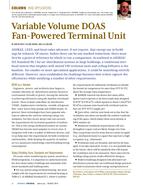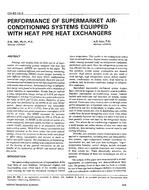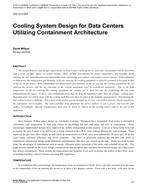The problems of defining thermal parameters and comfort guidelines and developing effective residential energy conservation strategies were investigated in a field experiment conducted through the winter heating season, in a study involving about 200 people residing in 113 all-electric townhouse apartments. The effectiveness of daily feedback on electricity use and a videotape program demonstrating ways to adapt to cooler home temperatures was assessed by a between groups design study where one group received feedback and saw a “modeling” videotape demonstrating how to adapt to cooler home temperatures; one group received feedback, but saw only a discussion videotape on the energy situation; one group saw the modeling film, but received only information on adapting to cooler home temperatures; one group saw the discussion tape and received information on adaptation; and one group served as an untreated control group. Dependent measures included daily electricity use, bi-hourly temperature and humidity data from hygrothermographs placed in the homes, and self-reports of clothing worn and participants’ comfort ratings. Either alone, or in combination, feedback and the modeling condition were effective in motivating people to reduce overall electricity use by about 15% and electricity used for heating by about 26%. Savings were accomplished by reducing household temperature by about 1.94°C (3.5°F) and following night and day thermostat setback. Comfort was generally maintained, clothing ensembles were increased, and follow-up data indicated decreased elecÂÂtricity consumption and lowered home temperatures were also maintained through the heating season. The results indicated that people evidently could adapt to much cooler home temperatures (16.1°C, 61°F) wearing less clothing than had been expected from prior laboratory findings on comfort. The study is discussed in terms of a social learning framework for comfort, areas that need to be investigated in residential energy conservation and human comfort, and possible ways to promote larger-scale change in energy consumption.
Citation: Symposium, ASHRAE Transactions, Volume 87, Part 1, Chicago, Illinois
Product Details
- Published:
- 1981
- Number of Pages:
- 11
- File Size:
- 1 file , 1.1 MB
- Product Code(s):
- D-CH-81-05-1


